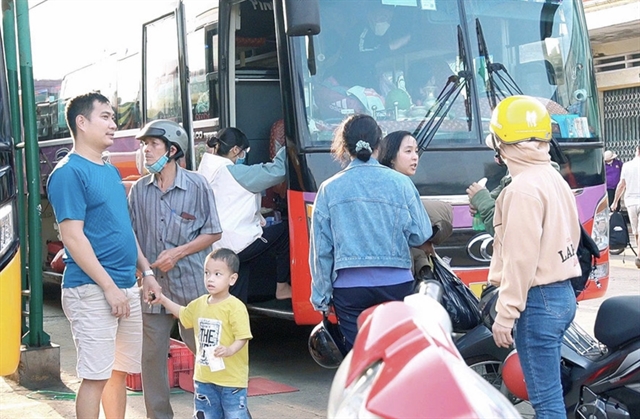 Life & Style
Life & Style

 |
| Transport operators on the Pleiku–Quy Nhơn route expand services after provincial merger. baogialai.com.vn |
GIA LAI — The relocation of Gia Lai Province’s administrative headquarters to Quy Nhơn has led to a surge in weekly commuter flows, prompting transport operators to expand services and authorities to step in with scheduling measures.
GIA LAI — Passenger transport between Pleiku and Quy Nhơn has witnessed a sharp and sustained increase since the administrative merger that established Quy Nhơn Ward as the new headquarters of Gia Lai Province.
The relocation has resulted in a strong demand for intercity travel, particularly from public officials, civil servants and workers based in the former Gia Lai region who now report to their new workplace in Quy Nhơn. From late June, several hundred people have been making the journey weekly to meet work obligations.
In response, transport companies have swiftly expanded operations on the Pleiku–Quy Nhơn route. Tuấn Anh Transport Co-operative in Pleiku, for example, has increased its fleet from nine to twelve vehicles.
“Previously, we operated only nine vehicles on this line. After the merger, demand spiked, so we added three more to meet the public’s needs,” said director Nguyễn Thanh Cường.
However, he raised concerns about long-term investment. “Passengers mainly travel early in the week and return late on Fridays. Midweek trips are almost empty. Some journeys begin at 3am, making it difficult to schedule drivers effectively. As this increase may be seasonal—coinciding with summer holidays—we must calculate carefully before investing further. If the demand fades, unused vehicles will become a financial burden.”
Other transport providers have also scaled up their operations. Between May and July 2025, the number of registered operators servicing the fixed Pleiku–Quy Nhơn route doubled from four to eight. Average daily trips rose from eight to 20, while ticket prices climbed from VNĐ115,000–150,000 to VNĐ150,000–220,000 depending on vehicle type and departure time.
Most of the vehicles used are 9-, 16-, or 29-seat minibuses, with no sleeper buses currently deployed on this route.
Several other fixed routes passing through Pleiku have seen similar growth in passenger traffic. These include Kon Tum–Quy Nhơn (involving the newly merged Quảng Ngãi province), Đức Cơ–Quy Nhơn, Chư Sê–Quy Nhơn, and Đắk Lắk–Bình Định. The changes suggest an increasingly mobile population adapting to new provincial boundaries.
According to the Gia Lai Department of Construction, around 370 people travel from Pleiku to Quy Nhơn each week for work, typically returning at the weekend. Two peak outbound time slots have been identified: Sunday at 6pm (181 passengers) and Monday at 3:30am (187 passengers). Inbound returns occur mainly on Friday at 5:15pm (266 passengers) and 5:45pm (90 passengers).
To manage the heightened flow, the Department of Construction has instructed transport operators to increase vehicle availability, especially at high-demand hours at the start and end of the week. Bus stations have been directed to cooperate with carriers to ensure timely dispatches and to assign staff to monitor passenger flows and issue transport permits during peak periods.
Trần Đình Sơn, Deputy Director of the Gia Lai Department of Construction, stressed the importance of maintaining seamless connectivity across administrative regions.
“In the context of recent territorial restructuring, meeting travel needs between localities is crucial not only for public service delivery but also for supporting production, trade, and overall socio-economic development across the new Gia Lai Province,” he said. VNS




